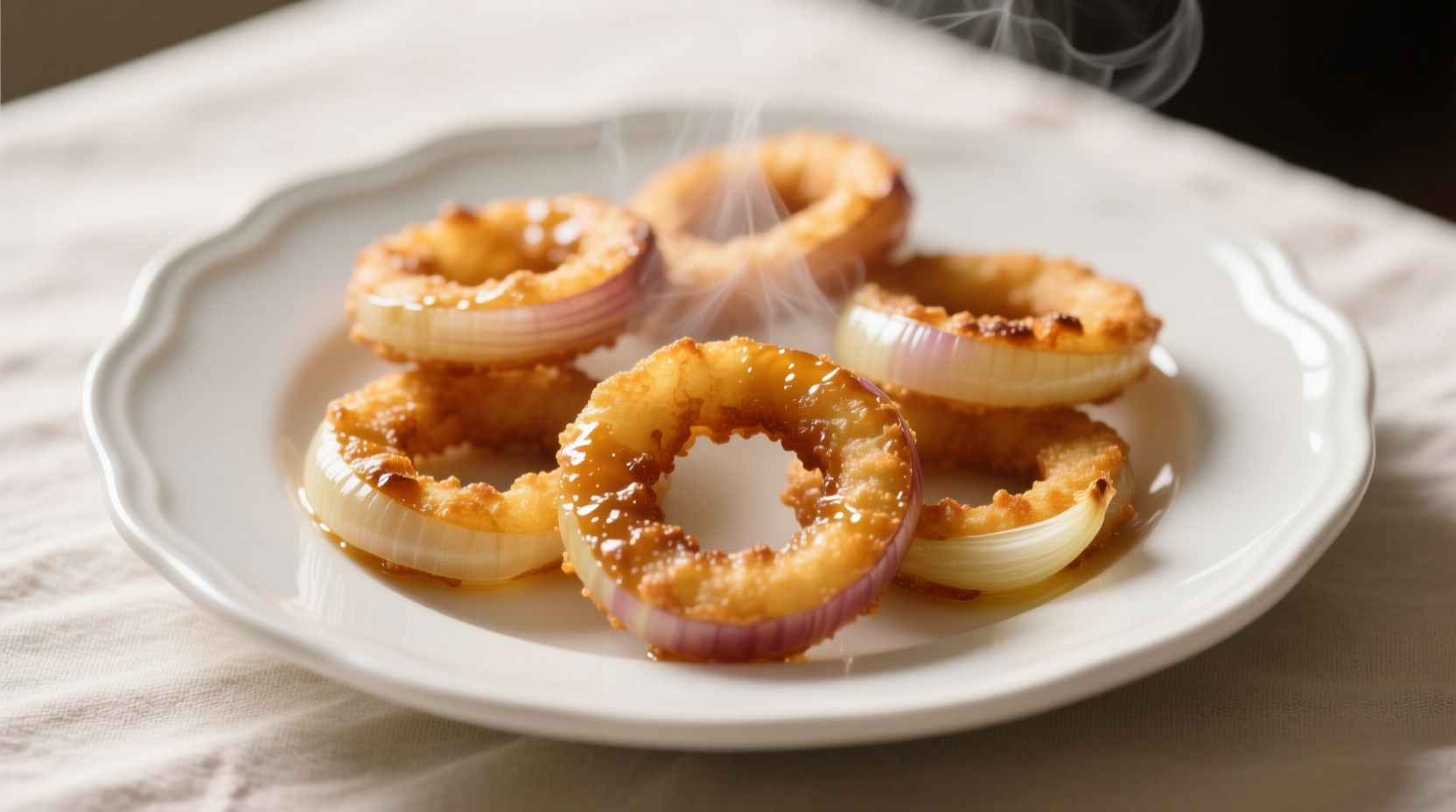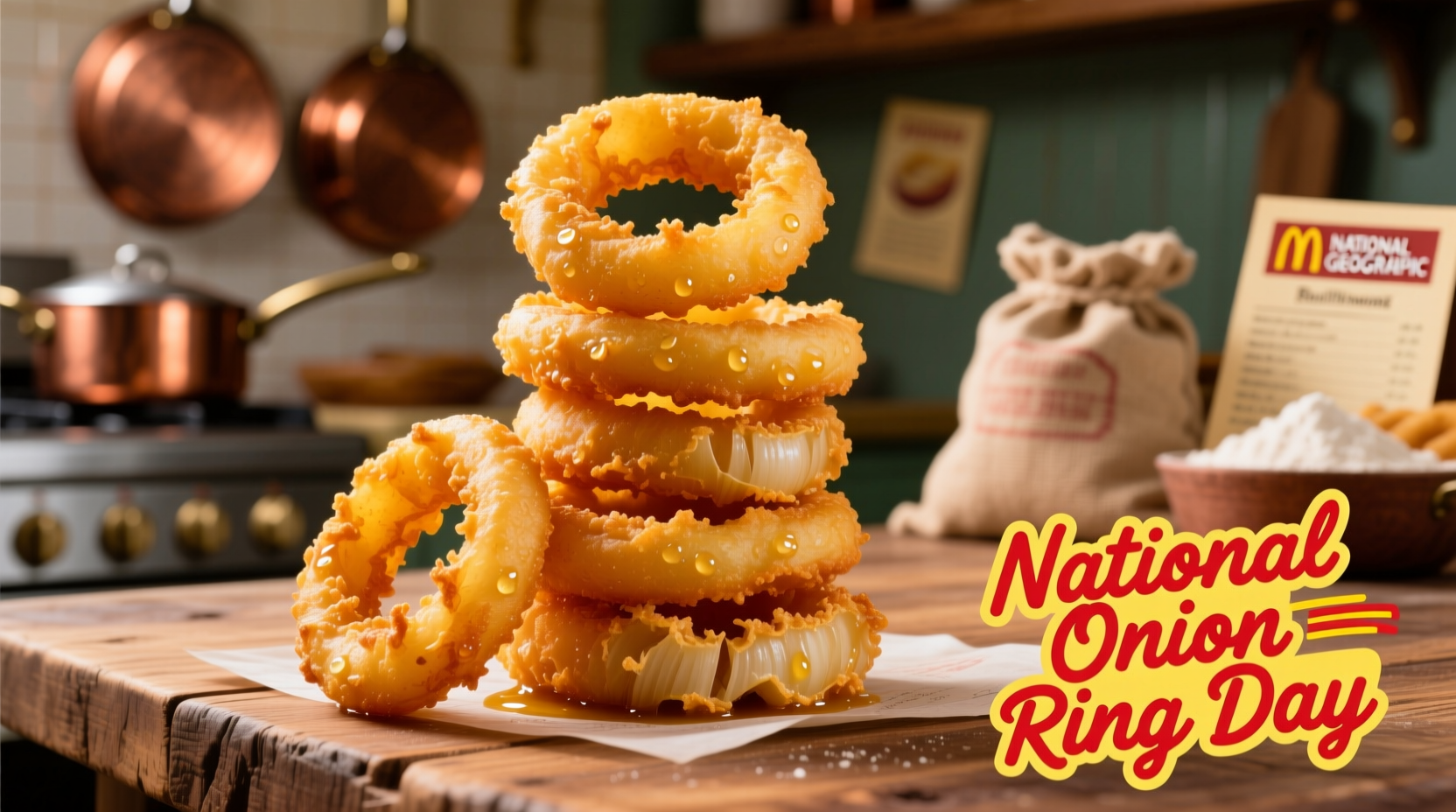National Onion Ring Day is celebrated annually on July 22nd, honoring the crispy, golden-brown snack that has been a beloved side dish and comfort food staple across American restaurants and households for decades.
Every year on July 22nd, onion ring enthusiasts across the United States celebrate a food item that transforms humble onions into something extraordinary. This unofficial holiday gives us permission to indulge in one of America's most satisfying fried foods without judgment. Whether you prefer them thick-cut and beer-battered or thin and delicately seasoned, National Onion Ring Day recognizes the culinary magic that happens when onions meet hot oil.
Why July 22nd? The Origin Story
Unlike many food holidays with murky origins, National Onion Ring Day has a relatively clear backstory. Food historians trace its establishment to the early 2000s when food calendar creators sought to fill gaps in the culinary celebration calendar. The date itself doesn't correspond to any specific historical event in onion ring history, but was strategically placed between National French Fry Day (July 13th) and National Ice Cream Day (the third Sunday in July), creating a summer trifecta of indulgent foods.
| Food Holiday | Date | Relationship to Onion Rings |
|---|---|---|
| National French Fry Day | July 13 | Precedes onion ring celebration in summer snack calendar |
| National Onion Ring Day | July 22 | Main event |
| National Ice Cream Day | 3rd Sunday in July | Follows onion ring celebration as cooling dessert |
From Medieval Snack to Modern Staple: The Evolution of Onion Rings
While National Onion Ring Day is relatively new, the snack itself has a surprisingly long history. The concept of fried battered vegetables dates back to at least the 14th century, with early English cookbooks mentioning "reed rings" (actually leeks) fried in batter. However, the modern onion ring as we know it emerged in the United States during the 1920s and 1930s.
According to food historians at the National Food Museum, the first commercial production of frozen onion rings began in 1940 when a small food company in Oregon developed a method to batter and freeze them for restaurant use. This innovation made onion rings accessible beyond high-end restaurants, transforming them from a luxury item to a mainstream menu staple.

Why Onion Rings Deserve Their Own Day
Onion rings represent more than just a side dish—they're a culinary achievement that transforms a pungent vegetable into something universally appealing. The USDA reports that Americans consume approximately 1.2 billion pounds of onions annually in various prepared forms, with onion rings accounting for a significant portion of that total.
What makes onion rings special is their textural contrast—the crisp exterior giving way to the tender, sweet onion inside. Unlike French fries which maintain consistent texture throughout, onion rings offer a dynamic eating experience where each bite reveals different layers of flavor and texture. Food scientists at Cornell University have studied how the Maillard reaction (browning process) interacts with onion sugars to create complex flavor compounds not found in other fried foods.
Your Complete Guide to Celebrating National Onion Ring Day
Whether you're a lifelong onion ring enthusiast or new to the celebration, here's how to properly honor this crispy delicacy:
At Home: DIY Onion Ring Success
- Choose the right onion: Sweet onions like Vidalia or Walla Walla work best for milder flavor
- Perfect batter technique: Double-dip method (flour → wet batter → breadcrumbs) creates maximum crispness
- Frying temperature: Maintain 375°F oil for optimal texture without greasiness
- Seasoning timing: Salt immediately after frying for best flavor adherence
Dining Out: Finding the Best Celebrations
Many restaurants offer special deals on National Onion Ring Day. According to data from OpenTable, approximately 35% of casual dining establishments participate in the celebration with discounts or specialty versions. Look for:
- Burgers with onion ring toppings
- Gourmet variations with unique batters (beer, buttermilk, tempura)
- Specialty dipping sauces created just for the occasion
Onion Rings Around the World
While National Onion Ring Day is primarily an American celebration, similar foods exist globally:
- Japan: "Negimaki" features thinly sliced onions wrapped around meat
- India: "Pyaaz ke pakode" are spiced onion fritters
- Mexico: "Aros de cebolla" often feature in street food culture
Food anthropologists note that these global variations typically use different battering techniques and seasonings that reflect local flavor preferences. In Asian preparations, for example, ginger and sesame often complement the onions, while Latin American versions might include cilantro and lime.
Fun Facts That Will Surprise Even Onion Ring Lovers
As you celebrate National Onion Ring Day, impress your fellow enthusiasts with these lesser-known facts:
- The world's largest onion ring weighed 42.5 pounds and was created in Texas in 2018
- Onion rings contain more fiber than French fries of equivalent weight
- Properly fried onion rings have a lower glycemic index than many other fried foods
- The sweetest part of an onion ring comes from the outer layers where sugar concentration is highest
Common Questions About National Onion Ring Day
As this food holiday grows in popularity, certain questions come up repeatedly from curious celebrants.











 浙公网安备
33010002000092号
浙公网安备
33010002000092号 浙B2-20120091-4
浙B2-20120091-4